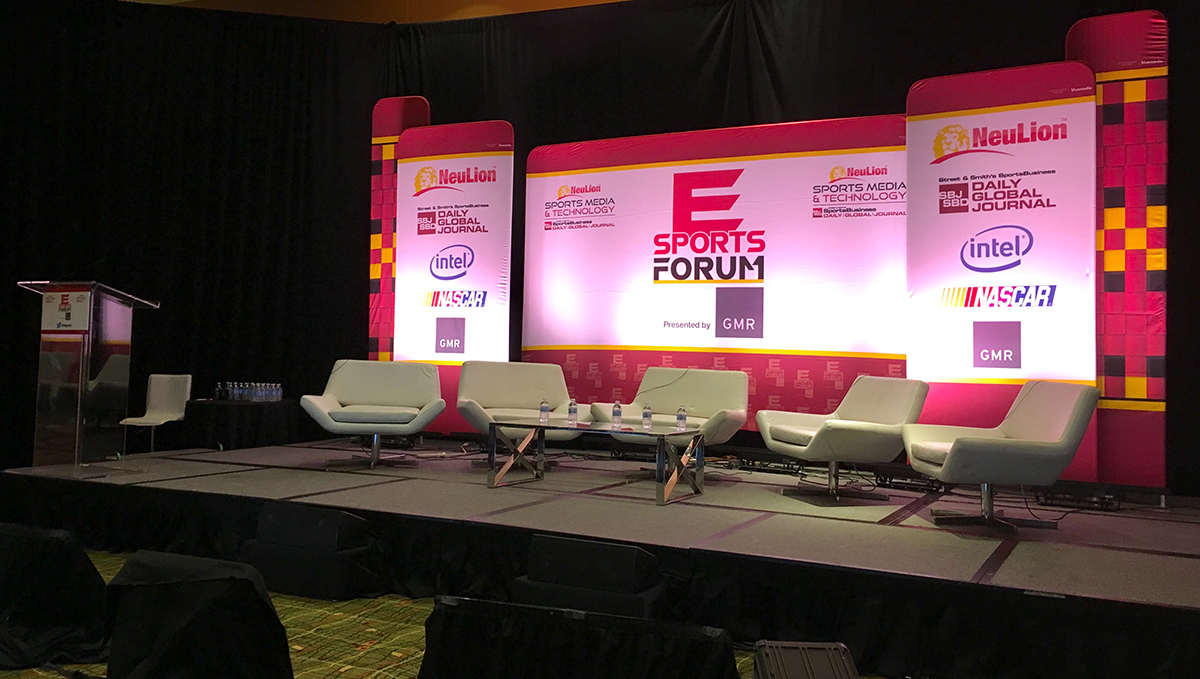
Sponsored by GMR, last week’s Esports Forum during Sports Business Journal’s annual Sports Media & Technology conference brought together key players from all sides of the eSports industry. Featured speakers included eSports leads from GMR, Comcast, ELEAGUE, Trokia and more.
Here were the day’s standout themes.
SPONSORSHIP
- Authenticity: We’ve heard it many times before, but brands need to understand the space and where best to enter before jumping in. Sponsorship without authenticity can do more harm than good. This was the single most common refrain during the Esports Forum.
- Reception: Research shows that eSports fans and players are surprisingly receptive to brand integration, but it has to be done properly. Fans and players are particularly open to event marketing in the form of exclusive experiences at eSports events.
- Endemic vs. Non-Endemic: Non-endemic brands definitely have a place in gaming if they do it right. Energy drinks, apparel, and other verticals are top fits based on fan research. In fact, ELEAGUE’s most successful sponsor is Arby’s, whose authentic integration has both built the brand and validated ELEAGUE’s position within the sport.
PLAYERS
- Income: Players in the US can earn $150-$300K annually. In Asia, top players pull in over $1 million. Much of the recent investment in from traditional sports teams into eSports is going toward player salaries.
- Career length: The average competitive player lasts 4-5 years, which is similar to a running back in the NFL. Burnout isn’t helped by lifestyle imbalance—10-12 training hours a day is common. Turnover within a career is considerable as well, as players move from team to team.
- Scholarships: Now offered by five US universities. Interestingly, the model is the inverse of traditional NCAA sports. Since many eSports players peak in their teens (16-18), college competition comes in the twilight of their career, rather than serving as a stepping stone to the pros.
STRUCTURE + INFRASTRUCTURE
- Governance: While there are many differing opinions on the right way to go about it, most stakeholders agree that some form of governing structure is needed to provide eSports the predictability, accountability and consistency of more established sports.
- Revenue sharing: Some form of collective bargaining and revenue sharing could help make the model more sustainable, by ensuring space in competition for a greater number of teams, not just a handful of well-funded teams.
- Stick-and-ball stability: Traditional sports teams will continue to invest in eSports, which means much more stability. For one, they offer an established infrastructure (arenas, production capabilities, It, sponsorship sales team, etc.) And the money going toward player salaries should allow for a more balanced, healthy lifestyle—leading to longer careers and less turnover.
WHAT TO WATCH
- Scouting: Scouting eSports players will be the next big thing—finding that 13-year-old that a team will invest in early.
- Broadcast: Having been exclusively digital from the beginning, eSports will lead the way in serving live sports to consumers via digital platforms. And since publishers’ business is not in media rights—it’s in getting people to play their games—there are far fewer content restriction around major gaming events than with traditional sports.
- Titles: Watch for an influx of new game launches and investment in game development as the industry booms. Over time, it’s likely that 4-5 main eSports will rise to the top, surrounded by smaller titles and audiences (think baseball vs. tennis). Expect a publisher to create a league around a major title in the next 6-12 months.
Want to learn more about eSports? Explore GMR's eSports agency capabilities, then get in touch to go deeper.


